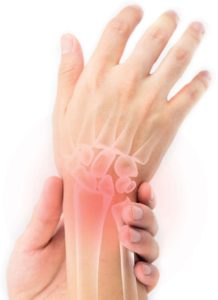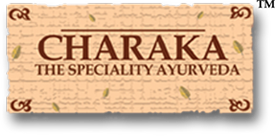
The disease usually begins gradually with fatigue, morning stiffness (lasting more than one hour), widespread muscle aches, loss of appetite, and weakness. Eventually, joint pain appears. When the joint is not used for a while, it can become warm, tender, and stiff. When the lining of the joint (synovium) becomes inflamed, it gives off more fluid and the joint becomes swollen. Joint pain is often felt on both sides of the body, and may affect the wrist, knees, elbows, fingers, toes, ankle or neck.
Because it can affect multiple other organs of the body, rheumatoid arthritis is referred to as a systemic illness and is sometimes called rheumatoid disease & is a progressive illness that has the potential to cause joint destruction and functional disability.
Rheumatoid arthritis can also produce diffuse inflammation in the lungs, membrane around the heart (pericardium), the membranes of the lung (pleura), and white of the eye (sclera), and also nodular lesions, most common in subcutaneous tissue. Although the cause of rheumatoid arthritis is unknown, autoimmunity plays a pivotal role in both its chronicity and progression.
In some patients with rheumatoid arthritis, chronic inflammation leads to the destruction of the cartilage, bone, and ligaments, causing deformity of the joints. Damage to the joints can occur early in the disease and be progressive. Moreover, studies have shown that the progressive damage to the joints does not necessarily correlate with the degree of pain, stiffness, or swelling present in the joints.
Most people with RA experience intermittent bouts of intense disease activity, called flares. In some people the disease is continuously active and gets worse over time. Others enjoy long periods of remission – no disease activity or symptoms at all. The symptoms and course of rheumatoid arthritis vary from person to person and can change on a daily basis.
About 1% of the world’s population is afflicted by rheumatoid arthritis, women three times more often than men. The disease occurs in all ethnic groups and in every part of the world. It is most likely to strike people 30-50 years of age, but it can occur in children, teenagers, and elderly people. A similar disease affecting young people is known as juvenile rheumatoid arthritis.
Rheumatoid arthritis usually inflames multiple joints in a symmetrical pattern (both sides of the body affected). Early symptoms may be subtle, usually with only minor joint pain, stiffness, and fatigue. Wrists, fingers, knees, feet, and ankles are the most commonly affected.
Joint symptoms may include:
- Morning stiffness, which lasts more than 1 hour, is common. Joints may feel warm, tender, and stiff when not used for an hour.
- Joint pain is often felt on the same joint on both sides of the body.
- Over time, joints may lose their range of motion and may become deformed.
Other symptoms include:
- Chest pain when taking a breath (pleurisy)
- Dry eyes and mouth (Sjogren syndrome)
- Eye burning, itching, and discharge
- Nodules under the skin (usually a sign of more severe disease)
- Numbness, tingling, or burning in the hands and feet
- Sleep difficulties
There is no test that can determine for sure whether you have RA. Most patients with RA will have some abnormal test results, although for some patients, all tests will be normal.
Two lab tests that often help in the diagnosis are:
- Rheumatoid factor test
- Anti-CCP antibody test
Other tests that may be done include:
- Complete blood count
- C-reactive protein
- Erythrocyte sedimentation rate
- Joint ultrasound or MRI
- Joint x-rays
- Synovial fluid analysis
Ayurveda Perspective & Management of Rheumatoid arthritis

” Sa Kashtaha Sarvarogaanaam yadaa prakupito Bhavet |
Hastha paada shiro gulpha trika jaanu uru sandhishu ||
Karoti sarujam shopham yatra doshaha prapadyate |
Sa desho rujate atyatham vyaviddha iva vrishchkaihi || “
This means ” If the disease “ama vata” (rheumatoid arthritis) gets aggravated, it becomes most difficult disease comparatively to others. The joints of hands, feet, ankles and elbow, low back, knee, and hip become inflamed and painful. The pain in the affected joints resembles the pain of a scorpion’s sting.”
A detailed description of the causative factors, pathophysiology, symptoms, treatment principles and diet & lifestyle modifications for treating ‘Amavata’ have been clearly explained in Ayurveda, thousands of years back.
Cardinal symptoms of Amavata
- Vriscik damsha vata vedana (Morning pain severe in nature)
- Sanchari Vedana (shifting pain)
- Stambha (stiffness of joints)
- Jwara (Increase temperature)
- Karmahani (loss of movements)
- Sandhi Vikruti (joint deformity)
- Kshudhamandya (Loss of appetite)
Prognosis
Disease with early onset and single dosha prominence in young individual can be cured with proper treatment and with religiously following the do’s and don’ts. As the disease become chronic it involves multiple systems, which makes the disease incurable. If it is present with signs of complications then it may produce serious threats to life.
In Ayurveda following are the lines of treatment in Amavata (Rheumatoid arthritis):
- Langhanam (Fasting)
- Sodhana chikitsa (Purification of the body)
- Shamana chikitsa (Treatment for subsiding the symptoms)
Langhana (fasting) – It is done by means of complete absence of food, or by giving green gram / rice / barley soups.
Shodhana – It is done through Panchakarma therapy. Usually treatment is long term and various procedures are done according to the patient condition and presentation. Therapies like Snehapanam, Vamanam, Manal kizhi, Virechanam, Podikizhi, Elakkizhi, Pizhichil, Vaitharana / Kshara basti, Navarakizhi etc are done to get the maximum results.
Shaman Chikitsa – It is done by using very effective and time tested Ayurveda formulations like kashaya, asavarista. Choorna, vati, taila, Rasoushadi etc.
Apart from these three, strict diet regimen and life style changes are advocated.
At CHARAKA, we are providing a very effective treatment methodology for treating Rheumatoid Arthritis (Ama vata), based on the Ayurveda lines of management coupled with years of experience and dedication.
If patient can come for the treatment in early stages of the disease, even complete cure is also possible provided patient follows all the guideline including diet restrictions strictly.
In chronic cases, complete cure may not be possible but control over the disease and dependency on allopathic medicines can be reduced.

